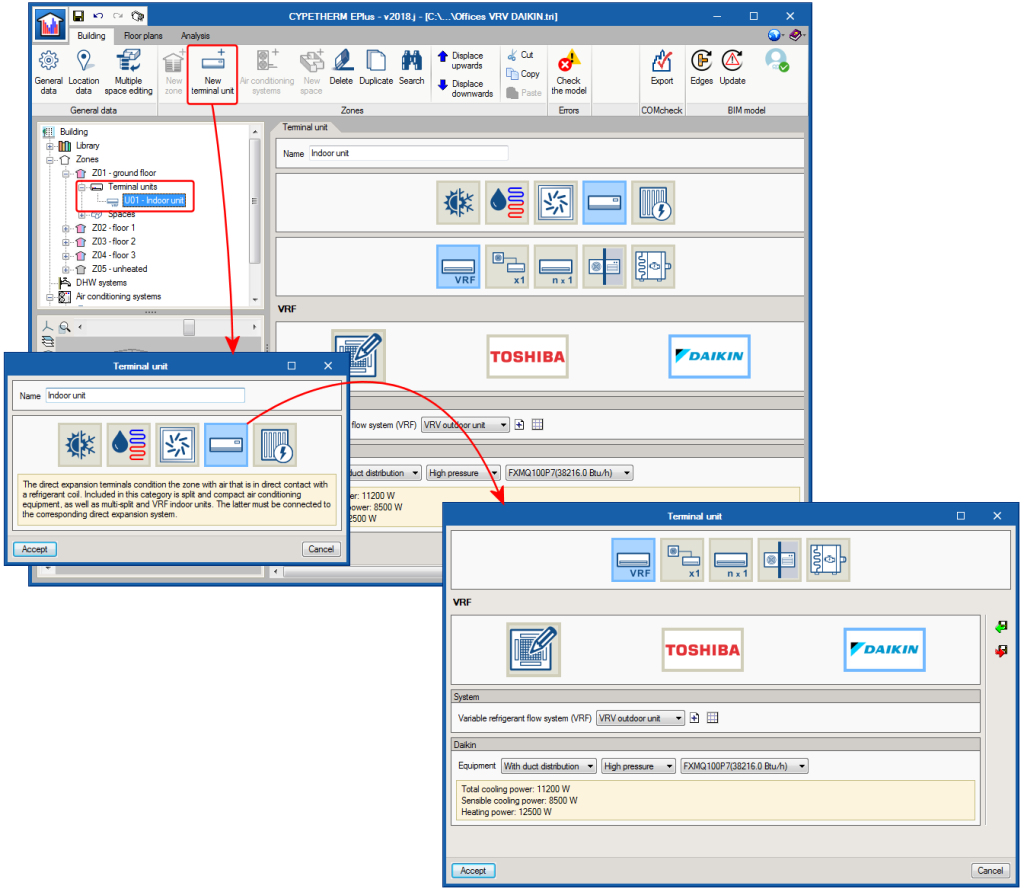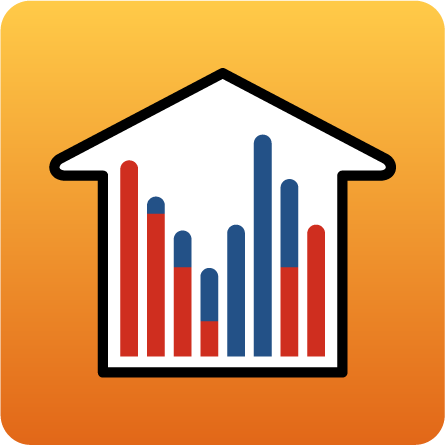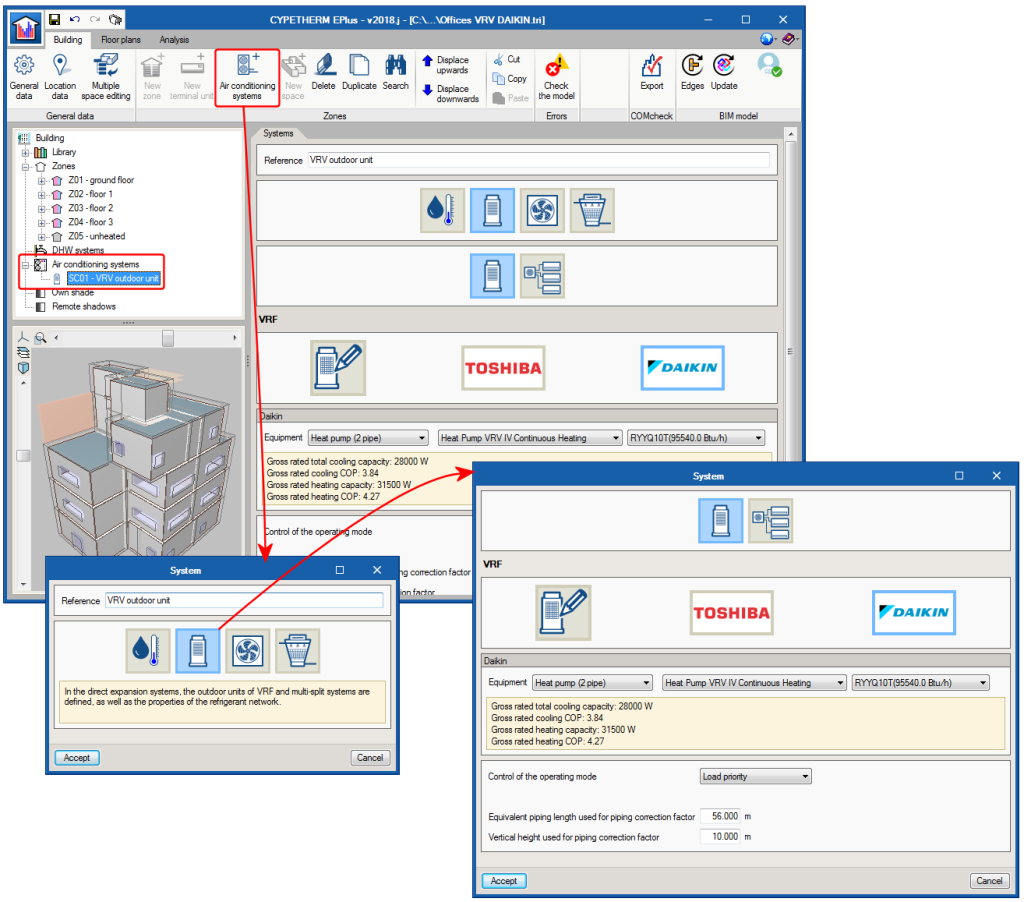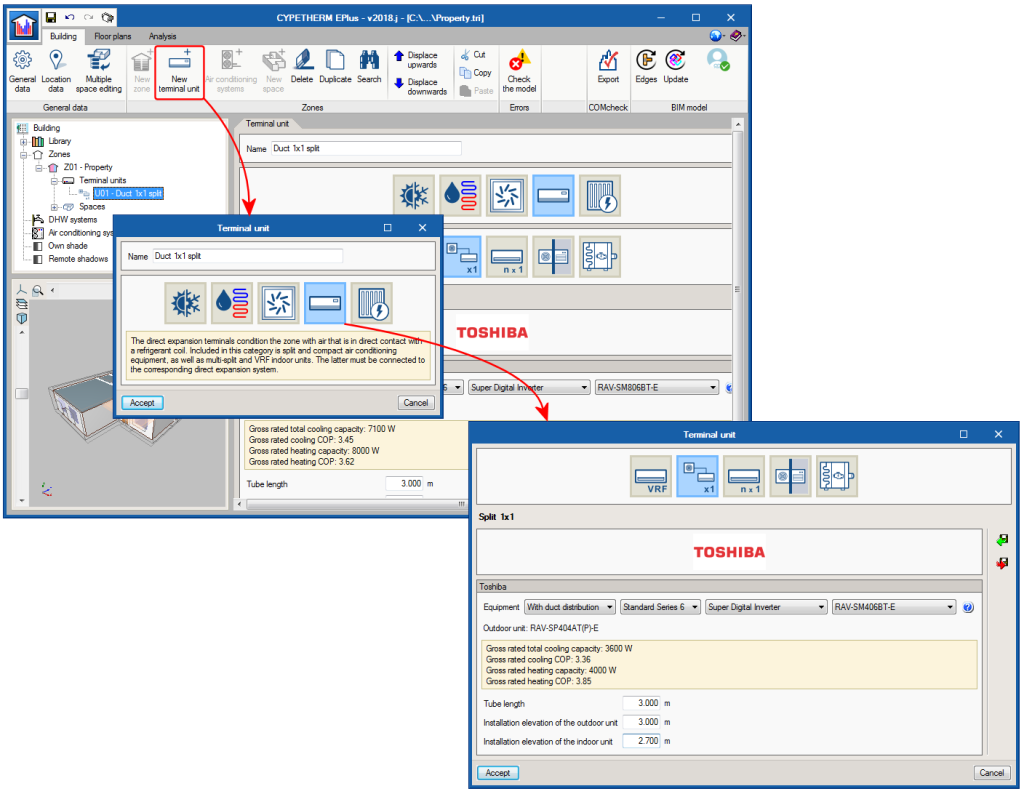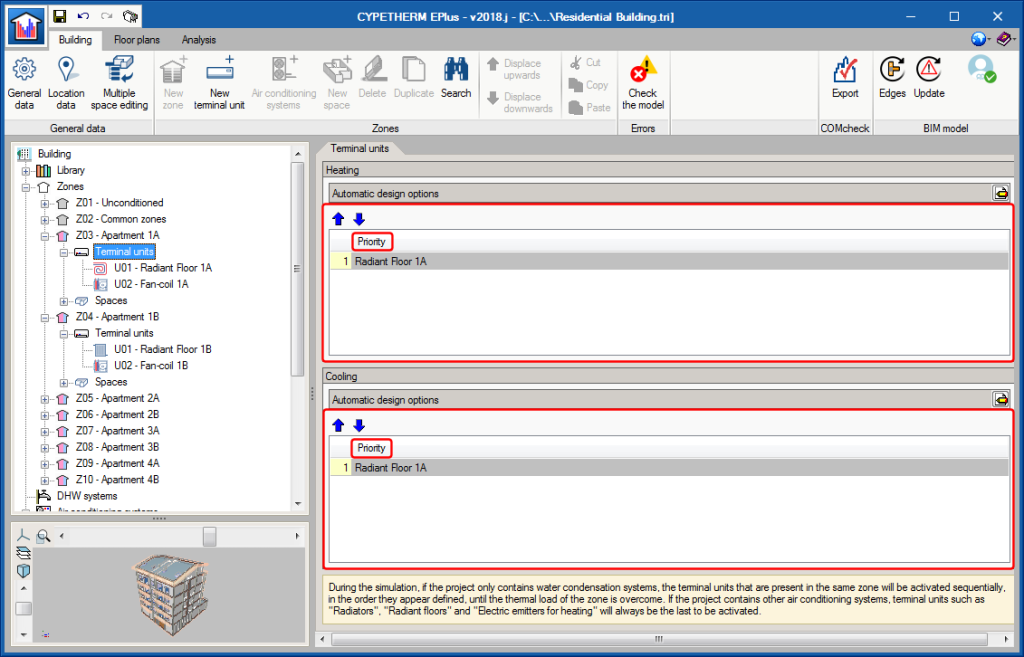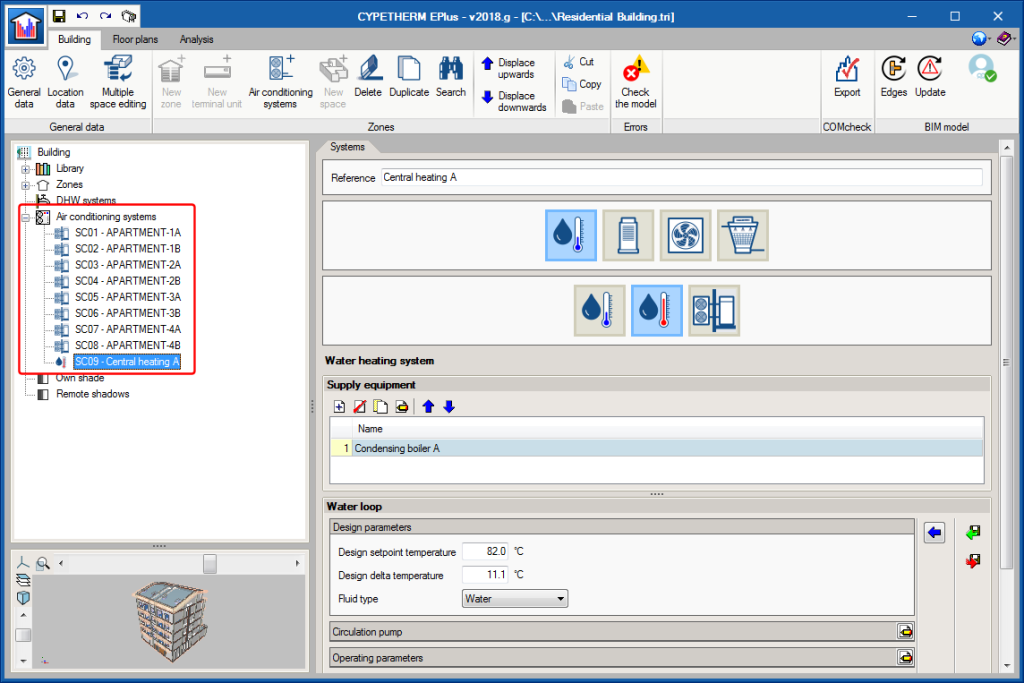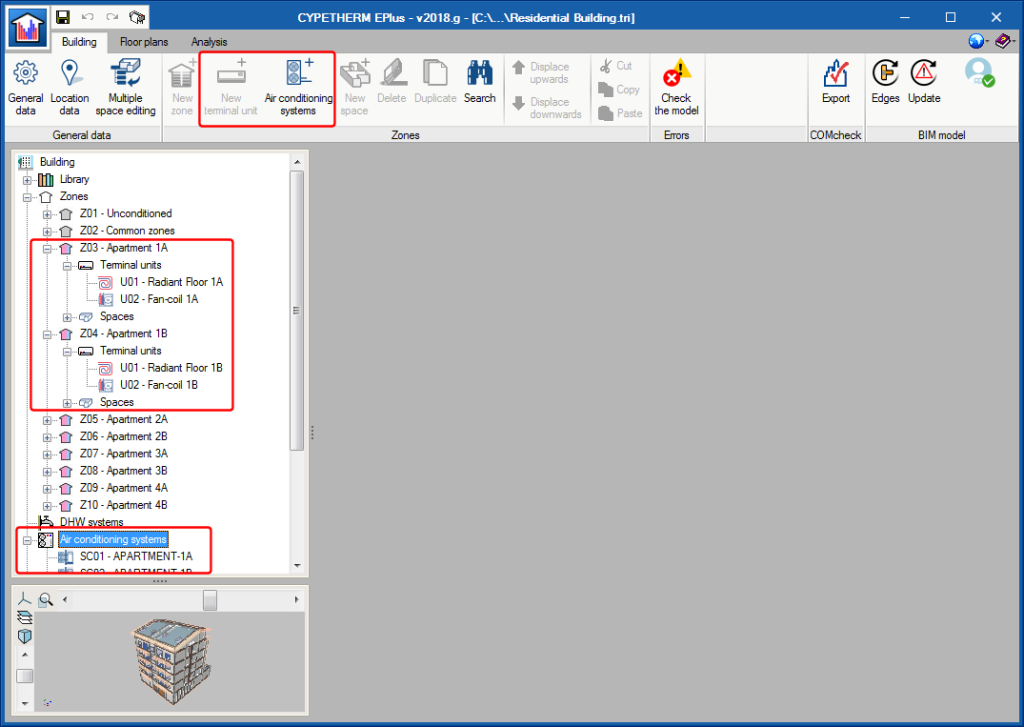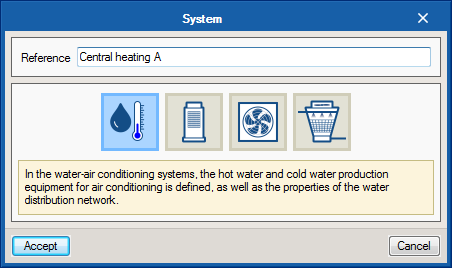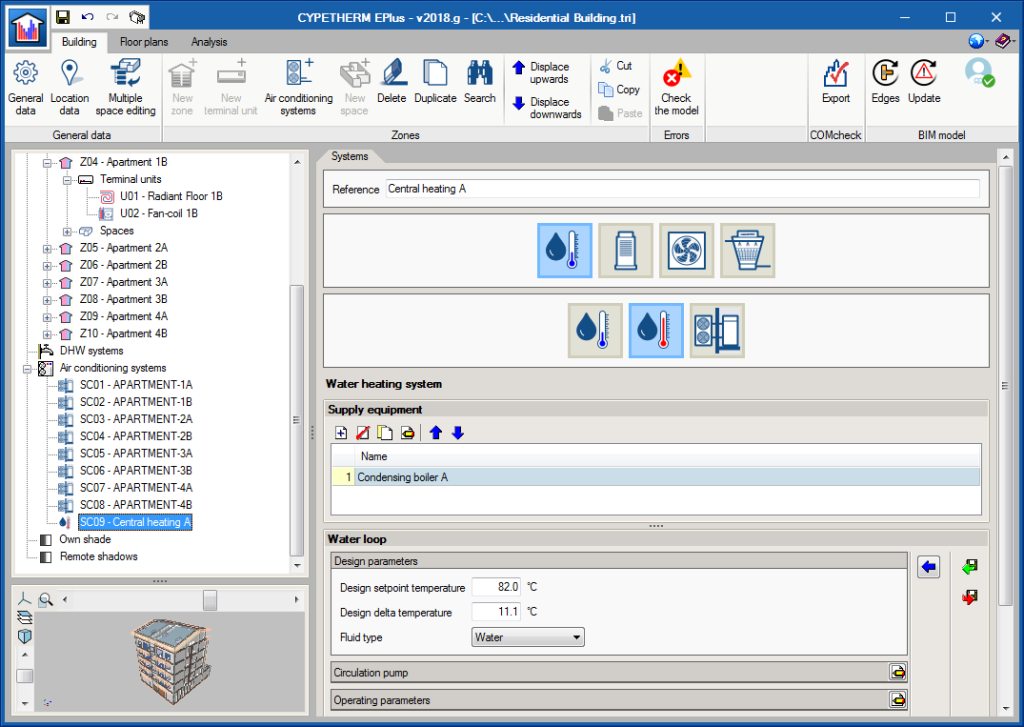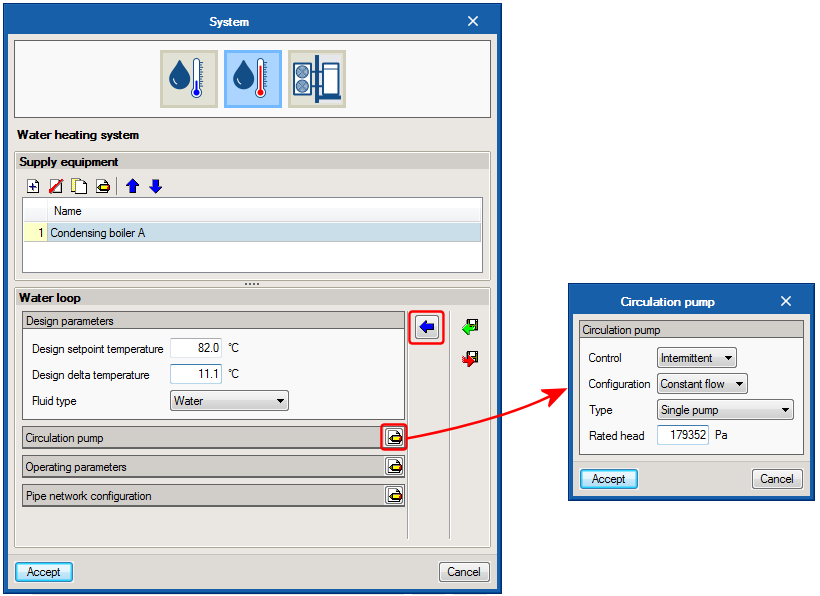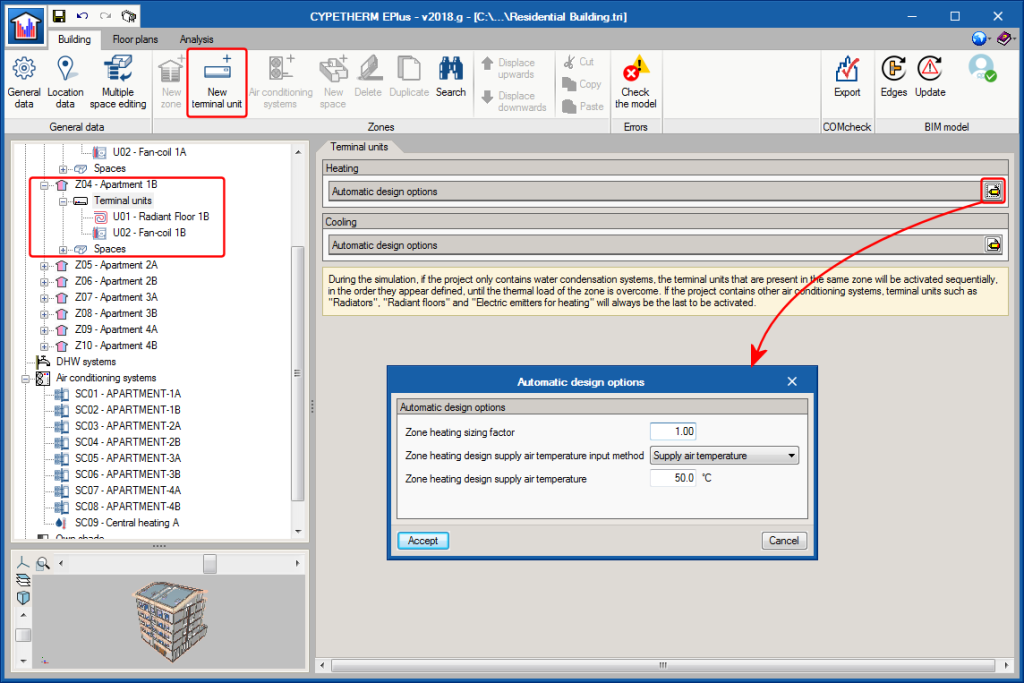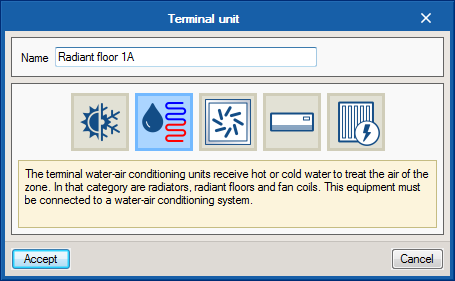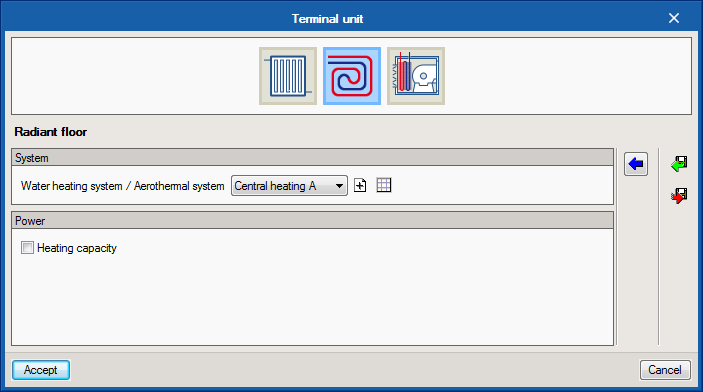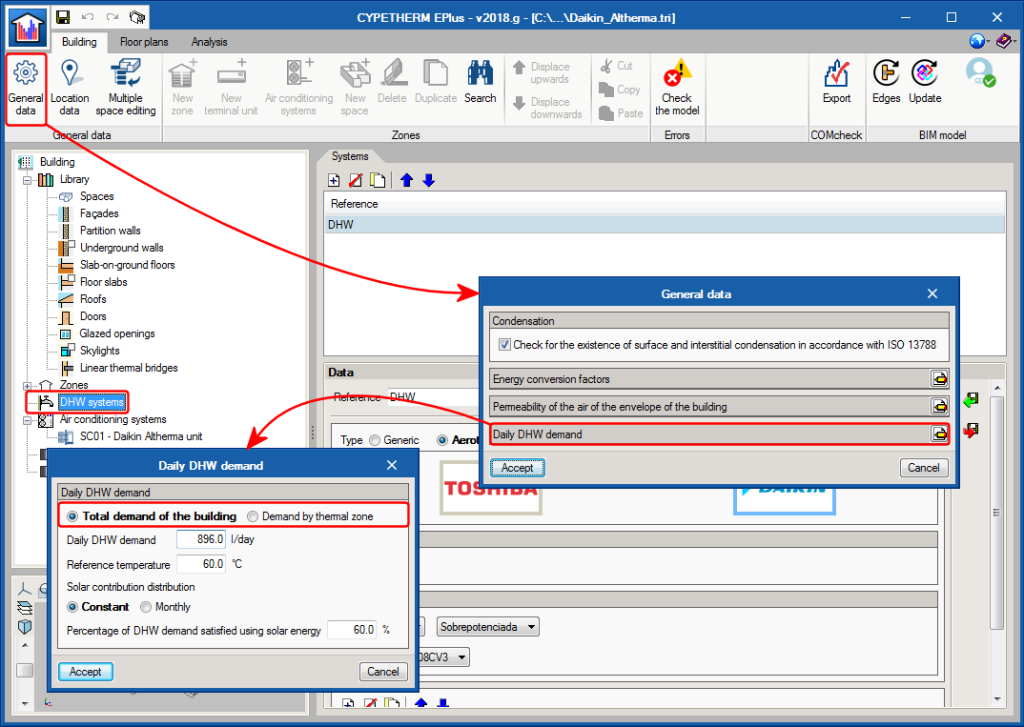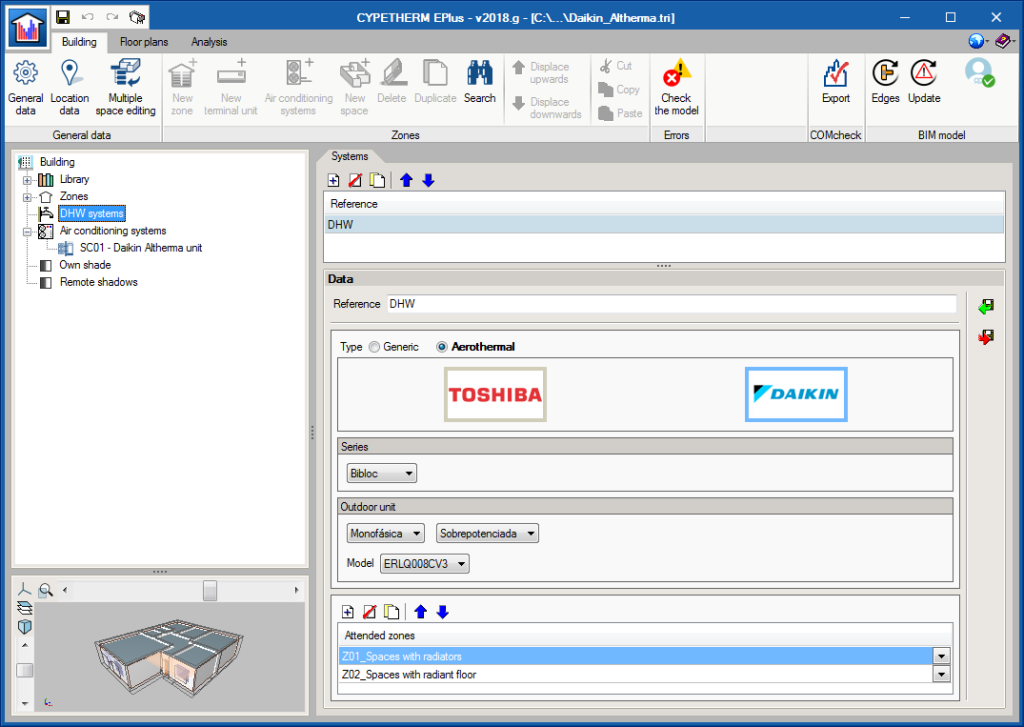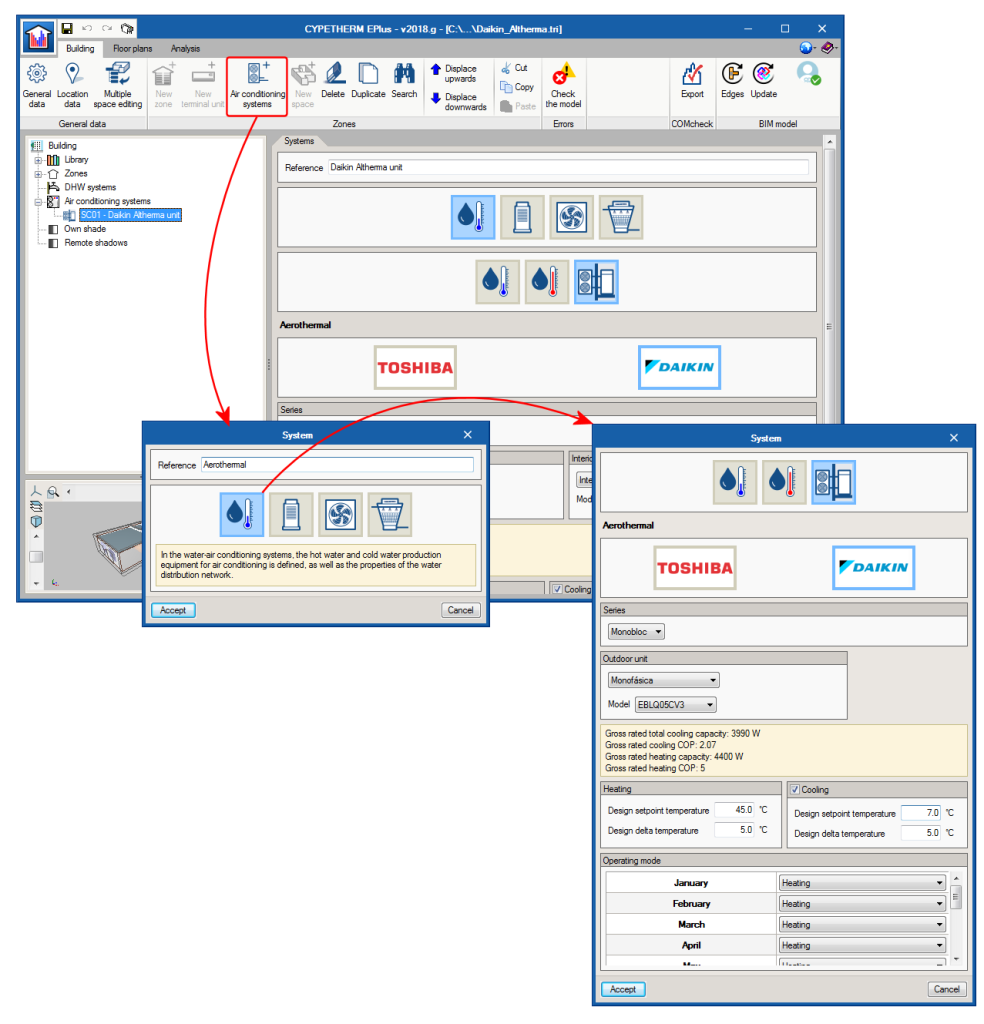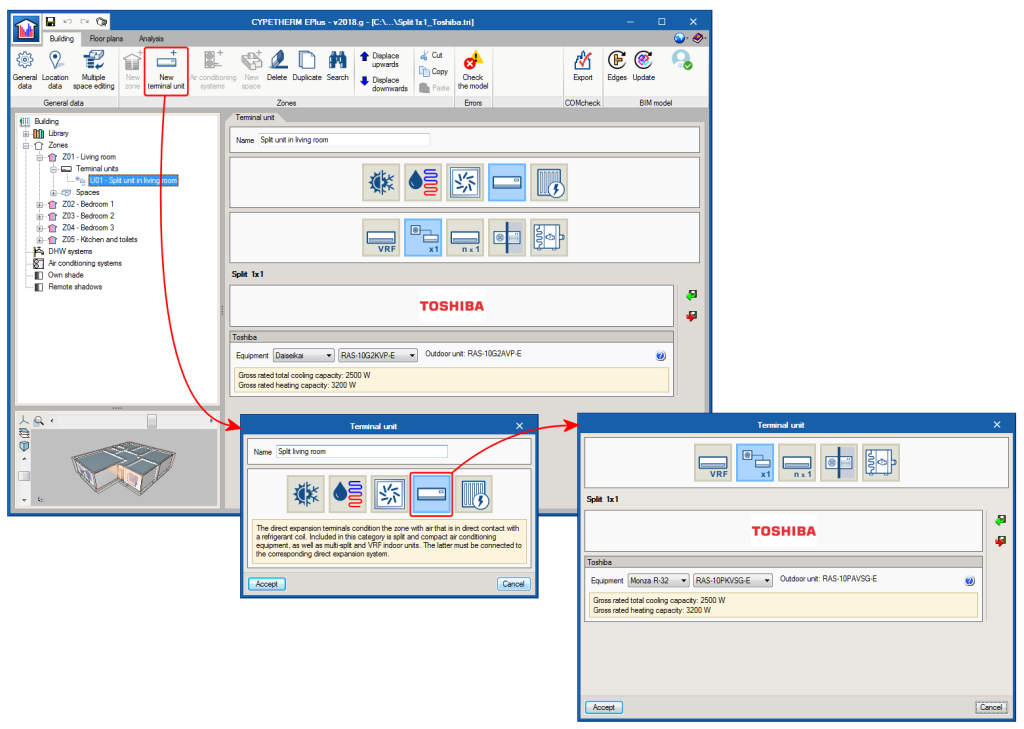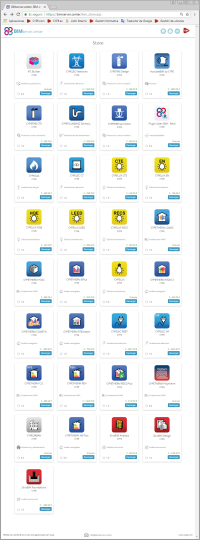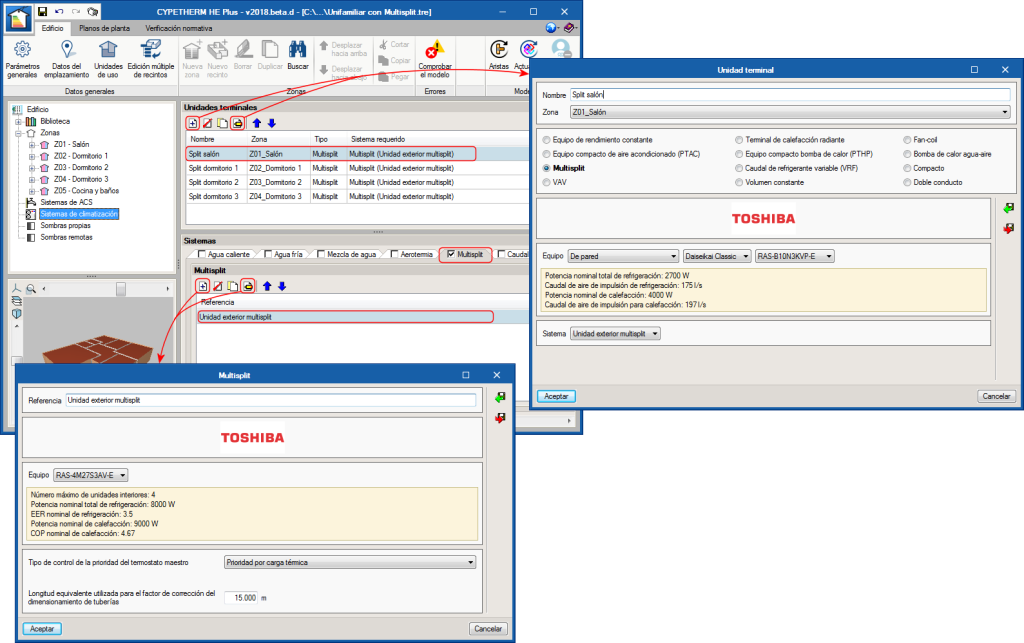The catalogue of Daikin VRV equipment has been integrated in CYPETHERM programs that have the EnergyPlus™ motor (CYPETHERM HE Plus, CYPETHERM RECS Plus and CYPETHERM EPlus). This way, the number of manufacturers amongst which users can choose variable refrigerant flow (VRF) systems is increased.
The Daikin logo has been added in Direct Expansion Air Conditioning Systems, in the VRF button. By clicking on it, users can choose amongst the different Daikin air-condensed VRV outdoor unit series and models, which are completely defined in the program. Similarly, Daikin indoor VRV units can be added using the New Terminal Unit button, Direct Expansion type, VRF button.
It is not possible to combine indoor and outdoor VRF systems of different manufacturers, nor manufacturer models with generic models.
